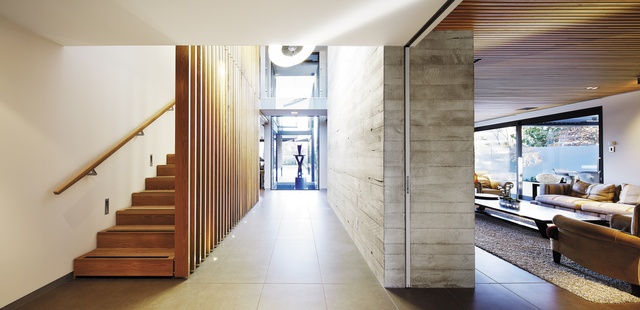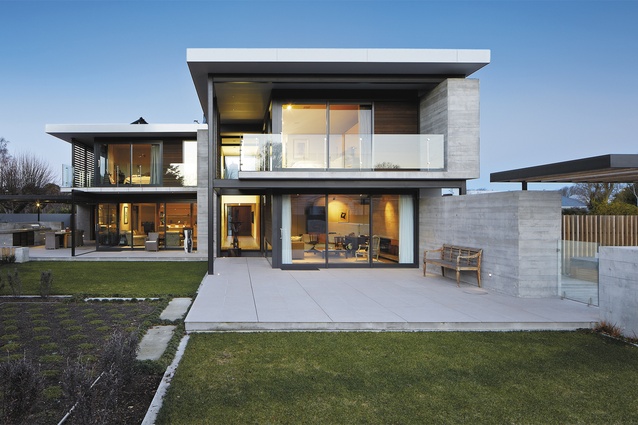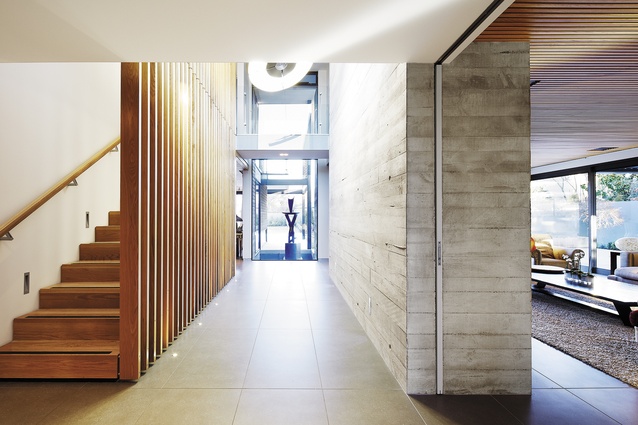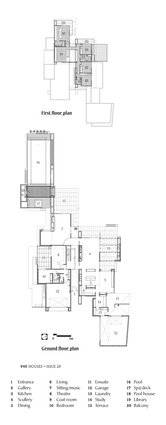Houses revisited: Fendalton house
According to traditional Chinese thought, the Wu Xing or five elements that make up the universe are wood, fire, earth, metal and water. The idea is to keep them in harmony, which is exactly what this Sheppard & Rout Architects-designed Christchurch house does. First published in 2013.
Built on a subdivision of the former Charles Luney estate, the house anchors itself to the tapering site at the end of a long vista of a driveway, welcomed by a small water feature, with strong horizontals reminiscent of Frank Lloyd Wright’s prairie-style houses and a strongly suggestive hint of the early Brutalist designs of Sir Miles Warren and Peter Bevan. Both influences are perfectly attuned to the extremes of the Canterbury climate. Nestled in a rear section of the well-heeled, bosky suburb of Fendalton, it is every square centimetre a 2012 NZIA Local Award family home that is both comfortable and luxurious. The fact that construction began before the Canterbury earthquakes and ‘trucked on through’ is a testament to the team who designed and built it.
The volumes of the house interlock like a Chinese puzzle-box, open plan with overflow spaces, plenty of indoor-outdoor flow, but easily divisible by discrete doors and moving walls that can open up the house for large family gatherings or compartmentalise it for private intimacy. The enormous scale of the house is tempered and kept intimate with relatively low, acoustically softening ceilings and the warmth of White Oak.
The house consists of two main volumes, the formal area with its music alcove, media centre, lounge and guest room, and a more relaxed living area flowing into the Ingrid Geldof-designed kitchen, which opens out onto the Tony Milne-designed garden and outdoor kitchen entertaining area. The two sections are separated by a raw and rough double-height in situ concrete spine, textured by the grain of the framing and creating subtle dappled patterns of light and shade. The strength of the concrete plays off the warmth of the wood, especially where the magnificent screened feature staircase (concealing the entrance to the wine cellar) provides a welcoming wooden heart to the house with a touch of Northern European and Scandinavian style.

The house seems very much a harmoniously organic part of the site, rising out of the ground like a natural geological formation and softened by intelligent plantings and expanding into the outdoors. Spatial volumes and densities are drawn together in Mondrian-like harmony and balance by more wood, the continuation of the concrete into a tucked-away pool area and the architectonic strengths of the expressed metal framing. The slotted-together forms of the house are continued and echoed in the garden by well-observed, witty details and understated visual accents. The living areas follow the sun around the building. Upstairs the family bedrooms and ensuite bathrooms, like the downstairs guest room, are cosy, quiet and discrete from the rest of the house, counterpointing familial life with individual privacy. The result is a gracious, spacious sanctuary for flexible, modern twenty-first century living.
Click here to see more Houses Revisited. And sign up to our email newsletters to receive Houses Revisited straight to your inbox.
Note: These are stories from our archives and, since the time of writing, some details may have changed including names, personnel of specific firms, registration status, etc.















